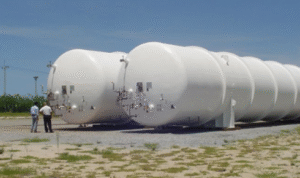If you’re experiencing electrical issues in your vehicle or any other machinery, a faulty fuse link could be the culprit. Knowing where to find the fuse link can save you time and hassle when troubleshooting electrical problems. In this guide, we’ll explore the ins and outs of fuse links and where you can locate them.
1. Understanding Fuse Links:
Fuse links are essential components in electrical systems, designed to protect circuits from overloads and short circuits. They consist of a special wire that melts when exposed to excessive current, interrupting the circuit and preventing damage to other components.
2. Types of Fuse Links:
Fuse links come in various shapes and sizes, depending on the application and current rating required. Common types include blade fuses, cartridge fuses, and fusible links.
3. Importance of Fuse Links:
Fuse links play a crucial role in electrical safety by preventing damage to equipment and minimizing the risk of electrical fires. Regular maintenance and inspection of fuse links are necessary to ensure they function correctly.
4. Locating the Fuse Box:
In most vehicles, the fuse box is located in the engine compartment, under the dashboard, or in the trunk. Refer to your owner’s manual for the exact location of the fuse box in your vehicle.
5. Identifying Fuse Link Positions:
Once you’ve located the fuse box, you’ll need to identify the fuse link positions corresponding to the circuits in question. Fuse boxes are typically labeled with the circuit’s function or use a diagram for reference.
6. Checking Fuse Link Condition:
Inspect the fuse links visually to check for any signs of damage or melting. A blown fuse link will have a visible break in the wire or may appear discolored due to overheating.
7. Using a Multimeter:
For a more accurate assessment, use a multimeter to test the continuity of the fuse link. A blown fuse link will show infinite resistance when tested with a multimeter.
8. Replacing Fuse Links:
If a fuse link is blown, it will need to be replaced with a new one of the same rating. Make sure to disconnect the power source before replacing the fuse link to avoid electrical shock.
9. Safety Precautions:
Always follow safety precautions when working with electrical systems. Wear insulated gloves and eye protection to prevent injury from electrical shocks or arc flashes.
10. Consulting a Professional:
If you’re unsure about locating or replacing fuse links, it’s best to consult a professional mechanic or electrician. They have the expertise and tools necessary to diagnose and repair electrical issues safely.
11. Testing Other Components:
In some cases, electrical problems may not be caused by a blown fuse link but by other faulty components such as relays, switches, or wiring harnesses. It’s essential to conduct thorough troubleshooting to identify the root cause of the issue.
12. Preventive Maintenance:
Regular inspection and maintenance of electrical systems can help prevent issues before they occur. Check fuse links and other components periodically to ensure they’re in good condition.
13. Keeping Spare Fuse Links:
It’s a good idea to keep spare fuse links of various ratings in your vehicle or toolbox for emergencies. This ensures you’ll always have a replacement on hand when needed.
14. Fuse Link Replacement Kits:
Some vehicles come with fuse link replacement kits that include a variety of fuse links and tools for easy replacement. Consider investing in one of these kits for added convenience.
15. Reading the Owner’s Manual:
Your vehicle’s owner’s manual is a valuable resource for information on fuse links and other electrical components. Refer to it for guidance on locating and replacing fuse links specific to your vehicle model.
16. Checking Online Resources:
There are numerous online resources, forums, and tutorials available for troubleshooting electrical issues in vehicles. These can provide valuable insights and tips from experienced professionals and enthusiasts.
17. Attending Workshops or Classes:
Consider attending workshops or classes on automotive electrical systems to enhance your knowledge and skills. Hands-on training can be invaluable for understanding complex electrical systems.
18. Taking Precautions When Jumpstarting:
When jumpstarting a vehicle, always connect the jumper cables to the appropriate terminals to avoid damaging fuse links or other electrical components. Follow the instructions carefully to prevent accidents.
19. Inspecting Aftermarket Modifications:
If your vehicle has aftermarket modifications such as aftermarket stereos or lighting systems, ensure that they’re installed properly and don’t overload the electrical system. Improper installations can lead to blown fuse links and other issues.
20. Verifying Manufacturer Recommendations:
Check the manufacturer’s recommendations for fuse link replacement intervals and procedures. Following these guidelines can help maintain the integrity of the electrical system and prolong its lifespan.
21. Understanding Warranty Coverage:
In some cases, electrical issues may be covered under warranty, depending on the vehicle’s age and mileage. Check with the manufacturer or dealer to see if repairs are covered under warranty.
22. Keeping Records of Repairs:
Maintain records of any electrical repairs or maintenance performed on your vehicle, including the replacement of fuse links. This documentation can be useful for future reference and potential warranty claims.
23. Being Mindful of DIY Repairs:
While DIY repairs can save money, exercise caution when working on electrical systems, especially if you’re not experienced. Incorrect repairs can lead to more significant issues and safety hazards.
24. Seeking Professional Assistance:
If you encounter electrical problems beyond your expertise, don’t hesitate to seek professional assistance. Trying to fix complex electrical issues without the proper knowledge and tools can be dangerous.
Knowing where fuse links are located and how to troubleshoot them is essential for maintaining the electrical system’s integrity in your vehicle. By following the guidelines outlined in this guide and exercising caution, you can ensure safe and reliable operation for years to come.





